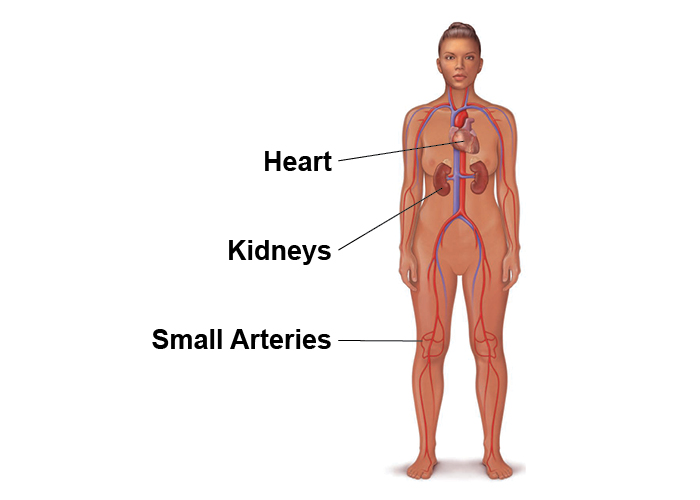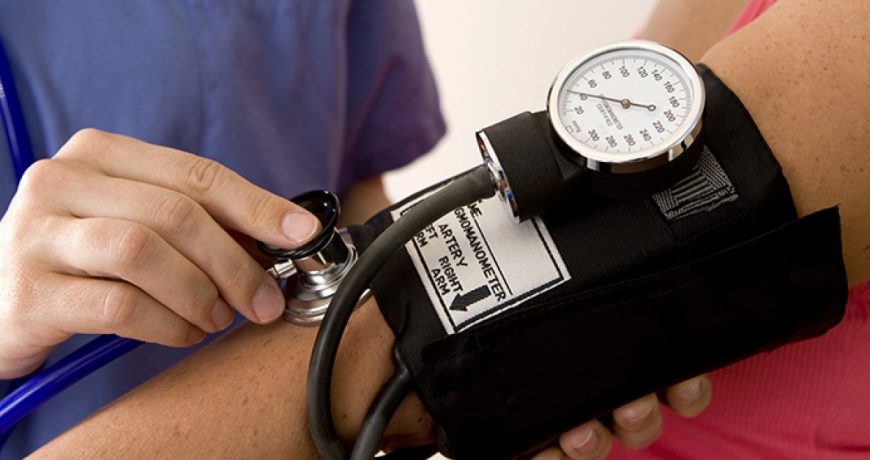No products in the cart.
Overview of Blood Pressure | RxWiki Leave a comment
[ad_1]
Learn the basics on hypertension, also known as high blood pressure.
It is a common misconception that blood flows at a constant pace through the body. In fact, blood moves in rapid fits and starts with every heartbeat. Each heartbeat you hear is the sound of the heart contracting and pumping blood.
What is blood pressure?
Blood pressure is the amount of force that blood applies to the walls of vessels as it moves through the body’s circulatory system.
- When the heart contracts—called systole—blood flows into the arteries and blood pressure increases.
- After each contraction, the heart briefly relaxes—called diastole—and blood flows from the veins into the heart to get ready for the next contraction. Blood pressure drops during this relaxation.
- There are 60,000 miles of arteries, veins, and capillaries in the adult human body.
The pattern of systole and diastole repeats about 100,000 times each day—enough pumping to push roughly 2,000 gallons of blood through an adult in 24 hours.
Why does blood pressure change?
A complicated system inside your body is always controlling your blood pressure. Blood pressure can change depending on your activity level, as well as many other factors.
- Blood pressure is usually lower when you are resting.
- Blood pressure tends to rise as you become more active.
Other factors that can change your blood pressure include:
- Changing your body position from sitting to standing.
- Your mental state, especially if you are anxious or stressed.
- The time of day (it’s often higher early in the morning).
- The temperature of your environment.
A network of nerves and hormones monitors these changes in the body. They signal different organ systems to either increase or decrease blood pressure as needed.
There are several main systems in your body that help control blood pressure:
- Heart
- Kidneys
- Arterial blood vessels
- Nerves
- Hormones

These systems get information about the body’s blood pressure from baroreceptors, which are tiny sensors in the blood vessels. Baroreceptors can spot changes in blood pressure levels, and they report strange levels to the central nervous system (CNS).
The CNS responds by controlling the resistance of the blood vessel walls. It also helps to regulate the rate and strength of the heart’s contractions. This combination helps lower the blood pressure again.
Heart
Your heart rate is the pace at which your heart beats. Your heart rate can both raise and lower blood pressure.
- When you exercise, your body needs higher blood pressure to deliver more oxygen and nutrients to your muscles. The heart beats faster, which triggers a rise in blood pressure.
- When you relax or sleep, your heart rate slows and your blood pressure drops.
- The stroke volume is how forcefully the heart pumps. It is also the amount of blood pumped from the left ventricle (one of the chambers in the heart) with each heartbeat.
- When you’re stressed or anxious, your nervous system can increase the stroke volume. This makes the heart pump harder and increases blood pressure.
Kidneys
Kidneys vary the amount of blood circulating by adjusting the levels of sodium (an element commonly found in salt) in the body.
- The more sodium is in the body, the higher the volume of blood in your arteries. This increases blood pressure.
- The kidneys also make renin, an important enzyme that controls the body’s balance of fluids and electrolytes.
- Renin can narrow small arteries and also cause blood to hold on to sodium, both of which increase blood pressure.
Arteries
Small arteries (also called arterioles) open and narrow as they adjust to changes in blood pressure. The ability to change resistance in response to blood flow is the main way the body keeps blood pressure normal.
- As you exercise and blood pressure starts to rise, the arteries widen to allow for the extra blood being pumped. This helps to cancel out the increase in blood pressure.
- Hypertension (high blood pressure) often occurs as we age because our blood vessels become less elastic. It becomes harder and harder for them to widen and narrow.
Nerves
An elaborate network of nerves plays a role in regulating blood pressure.
- Special nerve endings called baroreceptors in the walls of the arteries monitor blood pressure.
- When blood pressure increases, the artery wall expands and the baroreceptors signal the central nervous system to help regulate the blood pressure.
- Blood pressure is similarly monitored in the kidneys.
- This is specifically in the glomeruli (clusters of tiny blood vessels), where blood is filtered.
Hormones
A complex set of hormones, including renin, angiotensin, and aldosterone, also regulates blood pressure.
- Renin is secreted by the kidneys and is required for the production of angiotensin.
- This increases blood pressure by causing small arteries to constrict and by triggering the release of aldosterone from the adrenal glands.
- Aldosterone causes the kidneys to excrete less sodium and water in the urine.
- Normally, this complex regulatory system allows the blood pressure to rise and fall as needed and stay within a desirable range.
- But in some people, abnormalities in this system lead to chronically or frequently elevated resting blood pressure—called hypertension.
Now that you know how blood pressure works, it is important to be aware of your own risk factors for hypertension.
[ad_2]
Source link

